Weed management in oats – clear insights

On 19th March 2022, oats of the Lion variety were sown in the Controlled Row Farming trial at Gut Wambergen. Interesting insights into the various control strategies against weeds were obtained after the harvest.
The cultivation system follows the same principle of the last few years:
- Standard (A) with 12.5 cm row spacing and 300 seeds/sq m – with the usual full-width spraying
- Modern (B) with 25 cm row spacing and 200 seeds/sq m – with the usual full-width spraying
- CRF-reduced (C) with double row at 50 cm and 2 x 12.5 cm row spacing and 200 seeds/sq m – with hoe, undersown crop and band spraying
- CRF-optimised (D) with double row at 50 cm and 2 x 12.5 cm row spacing and 200 seeds/sq m – with the usual full-width spraying

Oats: CRF-reduced (C) with double row at 50 cm and 2 x 12.5 cm row spacing and 200 seeds/sq m
In accordance with the strategy which is usual in the region, 50 g/ha Pointer Plus and 1 l/ha U46M were applied to all variants on 28th April for weed control. The application was full-width in variants A, B and D. The identical spray rate per hectare was applied as a band spray in variant C. With a band width of 20 cm, we achieved herbicide savings of 60 %.

Full-width plant protection in oats in variant Standard (A) on 28th April 2022
UX 5200 Super with 27 metre Super-L boom
On the same date, hoeing was carried out in a single pass, band application of the herbicide on the double row was provided and 18 kg/ha of red clover was sown in the 30 cm intermediate area.
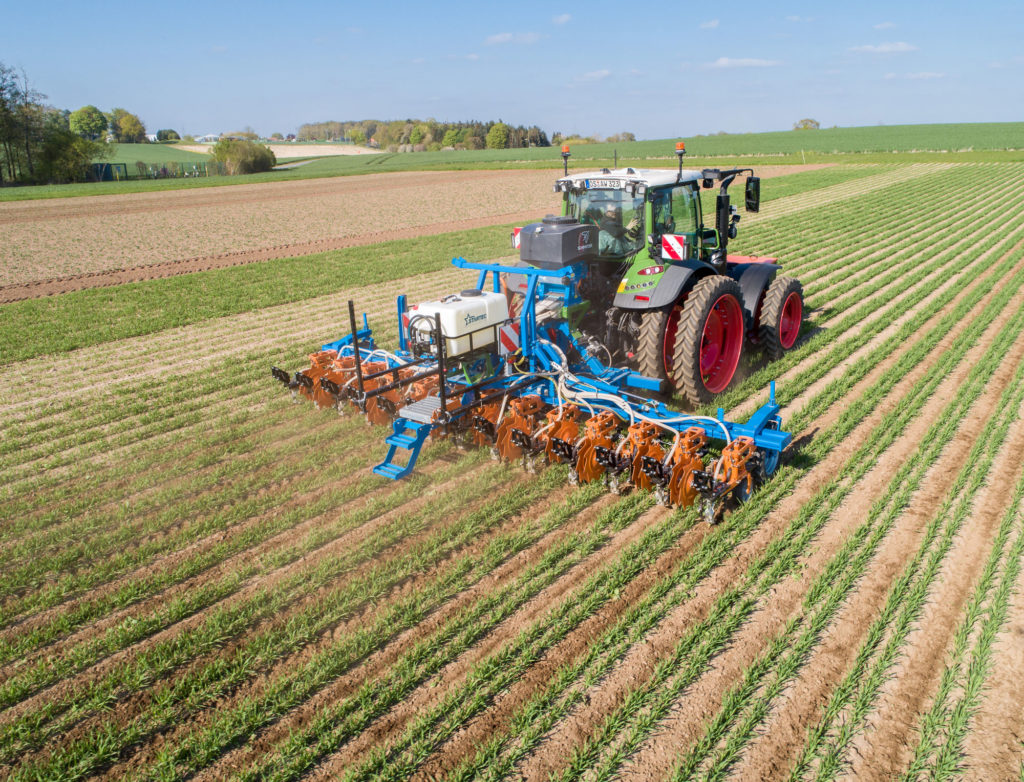
Mechanical weed control with band application and undersown crop in variant “CRF modern“ (C) on 28th April 2022, Schmotzer Select hoe 12 x 50 cm with Startec mounted sprayer and Greendrill 300
In addition, an application of fungicide and growth regulator was provided on 15th May. This application was not varied in the trial.
Field emergence was delayed and the competitive vigour of the oats was strong owing to the dry conditions after hoeing. The promotion of biodiversity was not very successful in the main growth phase of this summer cereal.
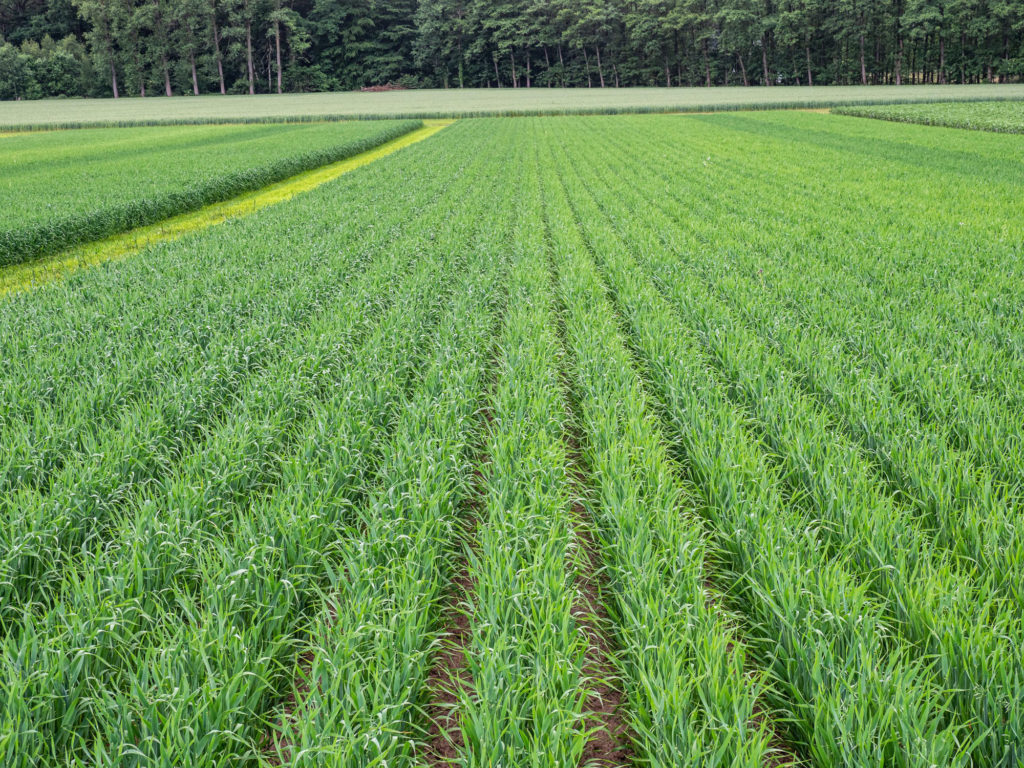
Oats in “CRF-reduced” (C) on 31st May 2022
The appearance of the trial variants after the harvest is all the more interesting. The oats were threshed on 25th July with yields of around 70 dt/ha.
The increased emergence of annual meadow grass (Poa annua) in some variants after the harvest is conspicuous. Annual meadow grass is a problem weed on this site and is not completely controlled by the herbicide used.
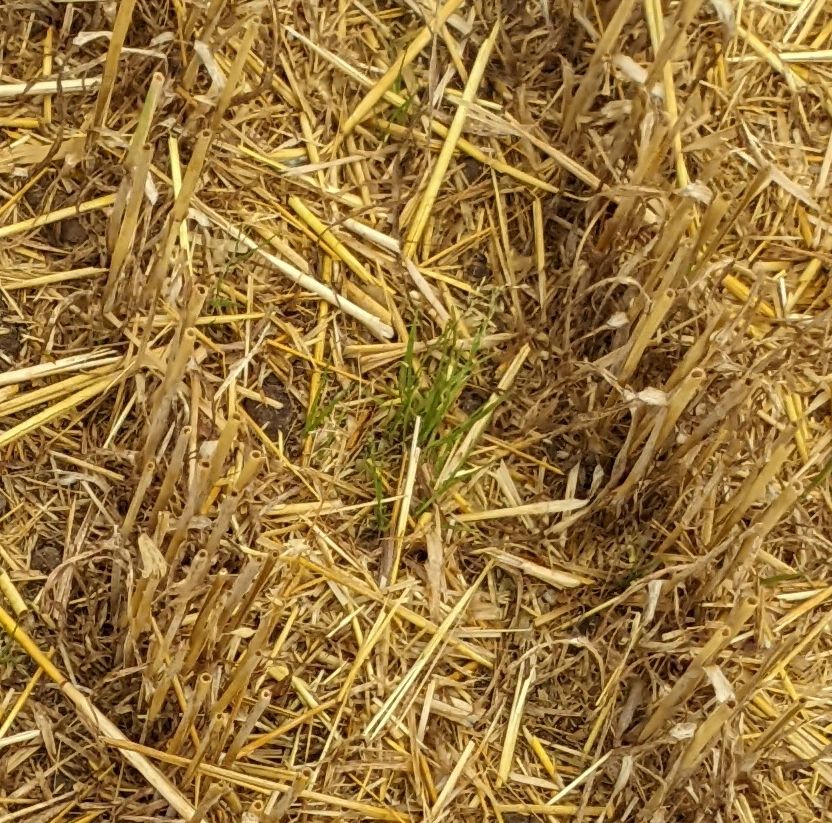
Annual meadow grass in the oat stubble
Extremely low weed persistence is apparent in the customary “Standard“ variant. As is known, oats suppress weeds very well at close row spacings.
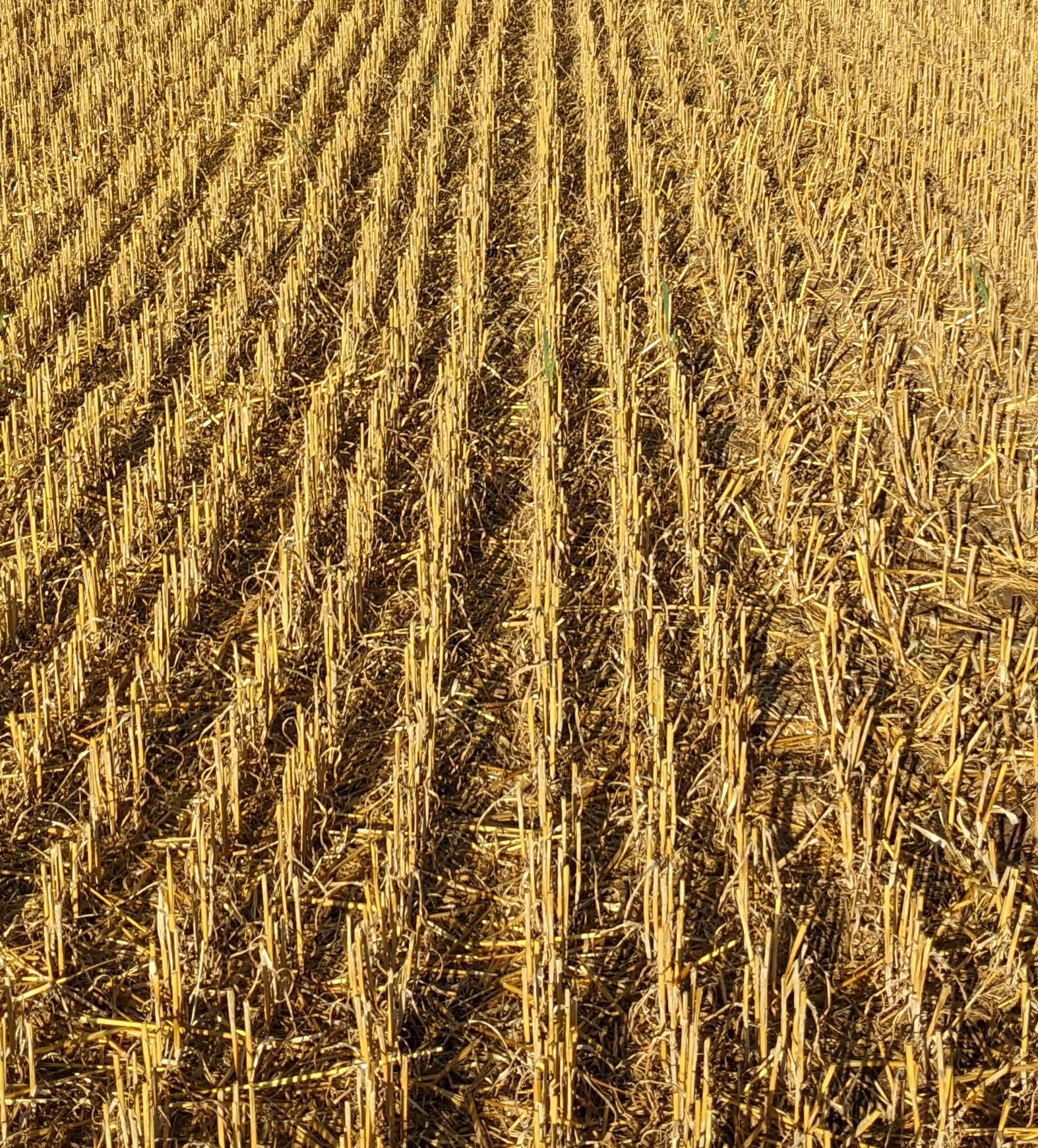
Oat stubble with 12.5 cm row width (A) on 28th August 2022
The population of annual meadow grass is worth controlling in variant B with a 25 cm row spacing. With the same herbicide application, it can be assumed that the greater and longer light incidence promoted the growth of the meadow grass. Shallow soil tillage or a total herbicide after the harvest would be appropriate, in order to prevent the spread of the meadow grass.
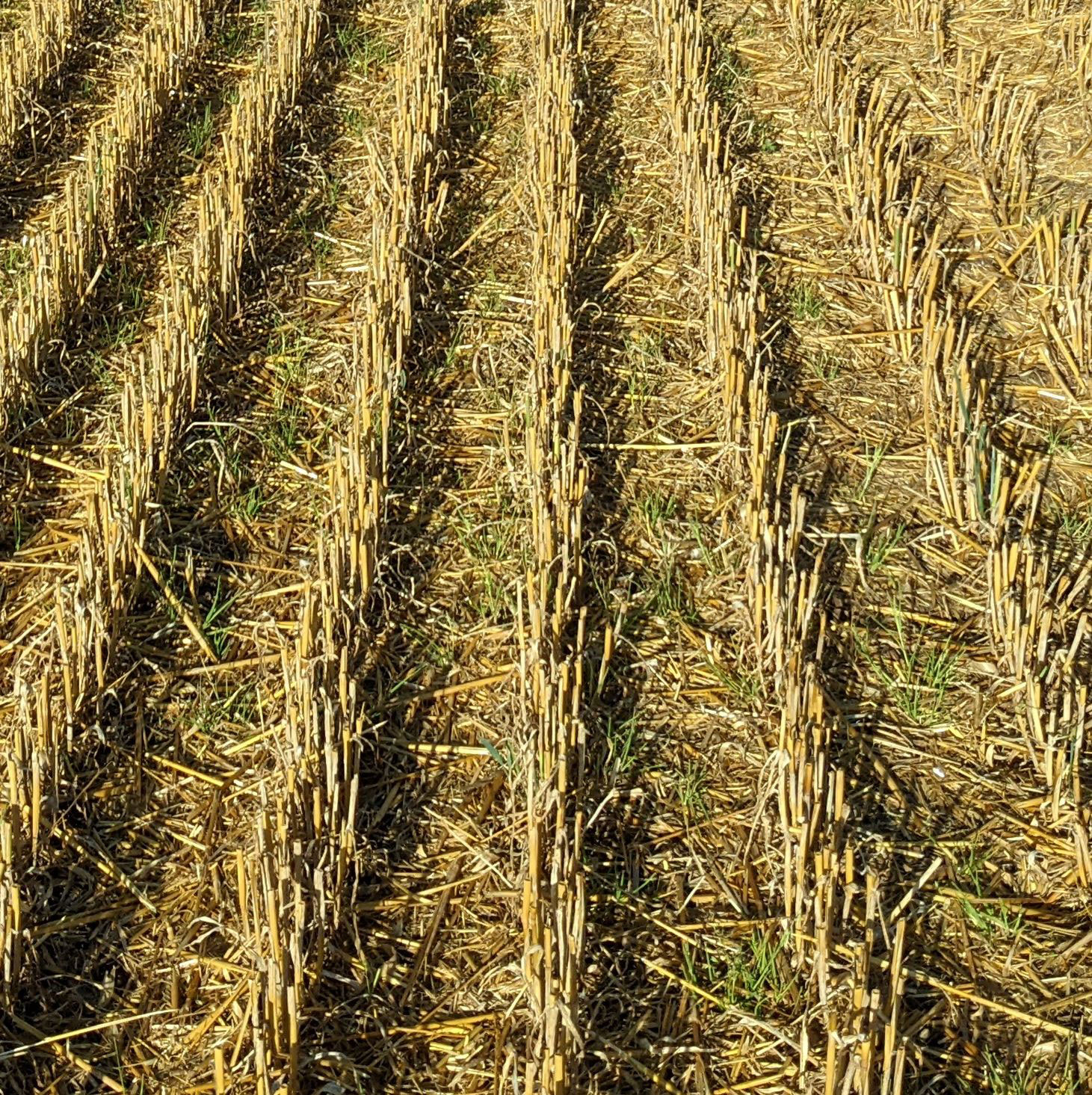
Oat stubble with 25 cm row width (B) on 28th August 2022
The red clover established itself surprisingly well in variant C. It can be assumed that it had sufficiently germinated and initially developed only very slowly under the oats. Heavy rainfall of 38 mm just before the harvest on 21st July then undoubtedly helped the increasing light to be used in the ripening crop.
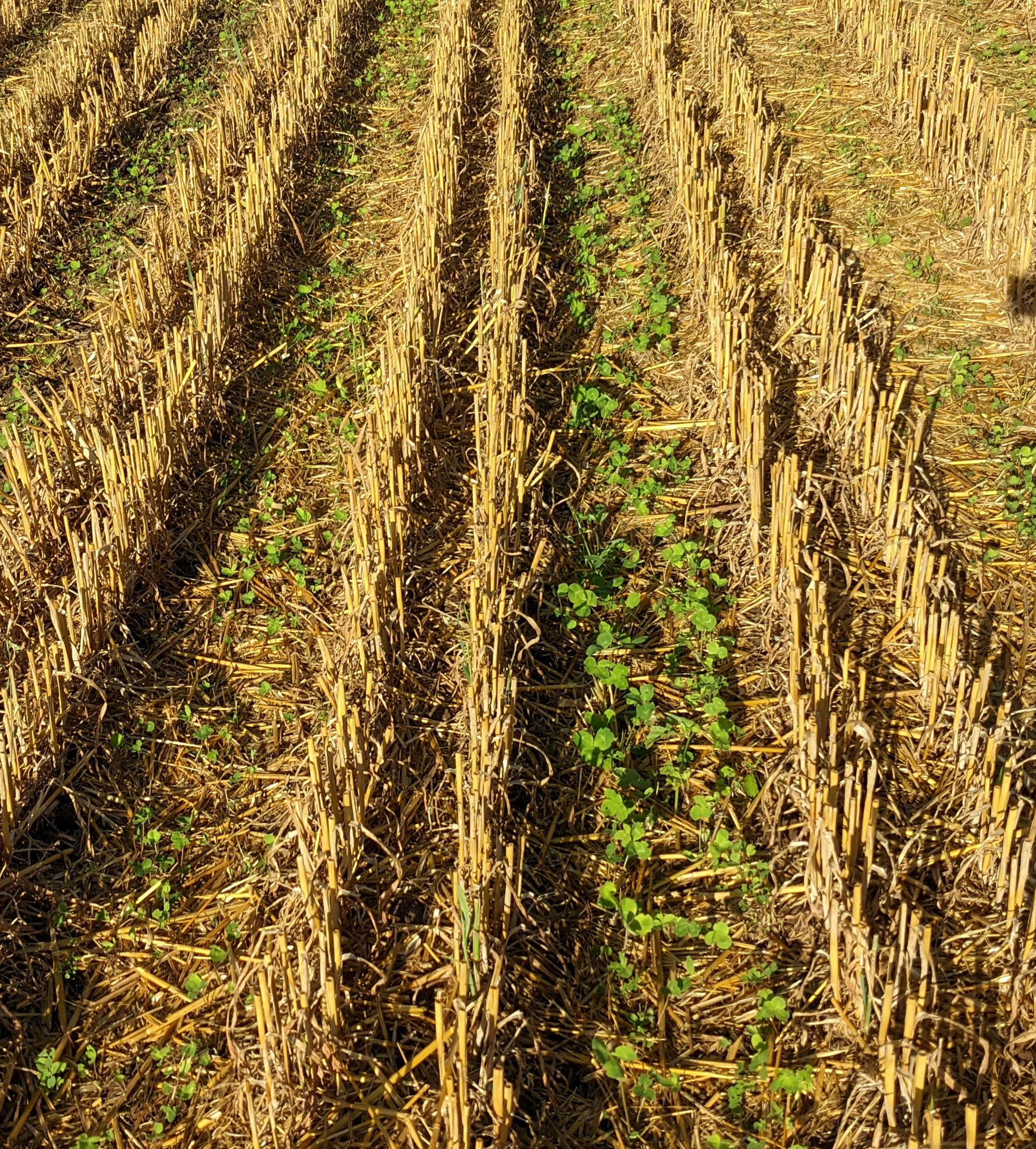
Oat stubble with 50 cm double row after hoe and undersown crop (C) on 28th August 2022
The advantages of a combined control strategy are apparent in variant C with double row at 50 cm and 12,5 cm row spacing. Only red clover and no annual meadow grass can be found in the working range of the hoe. The meadow grass undoubtedly emerged at the same time as the oats and would have spread as in variant B or D. The use of the hoe on 28th April was ideal,as it removed the annual meadow grass. The red clover established itself and the close row spacing in the double row in combination with band application of the herbicide suppressed the meadow grass very well. Annual meadow grass can occasionally be seen in the transitional area of the hoe and band sprayer. The meadow grass was obviously promoted by the intense light incidence at the edge of the double row. The hoe share could not reach several plants close to the row.
The annual meadow grass remains below the control threshold after the harvest in variant C. Weed control was extremely successful with a 60% reduction in herbicide use.
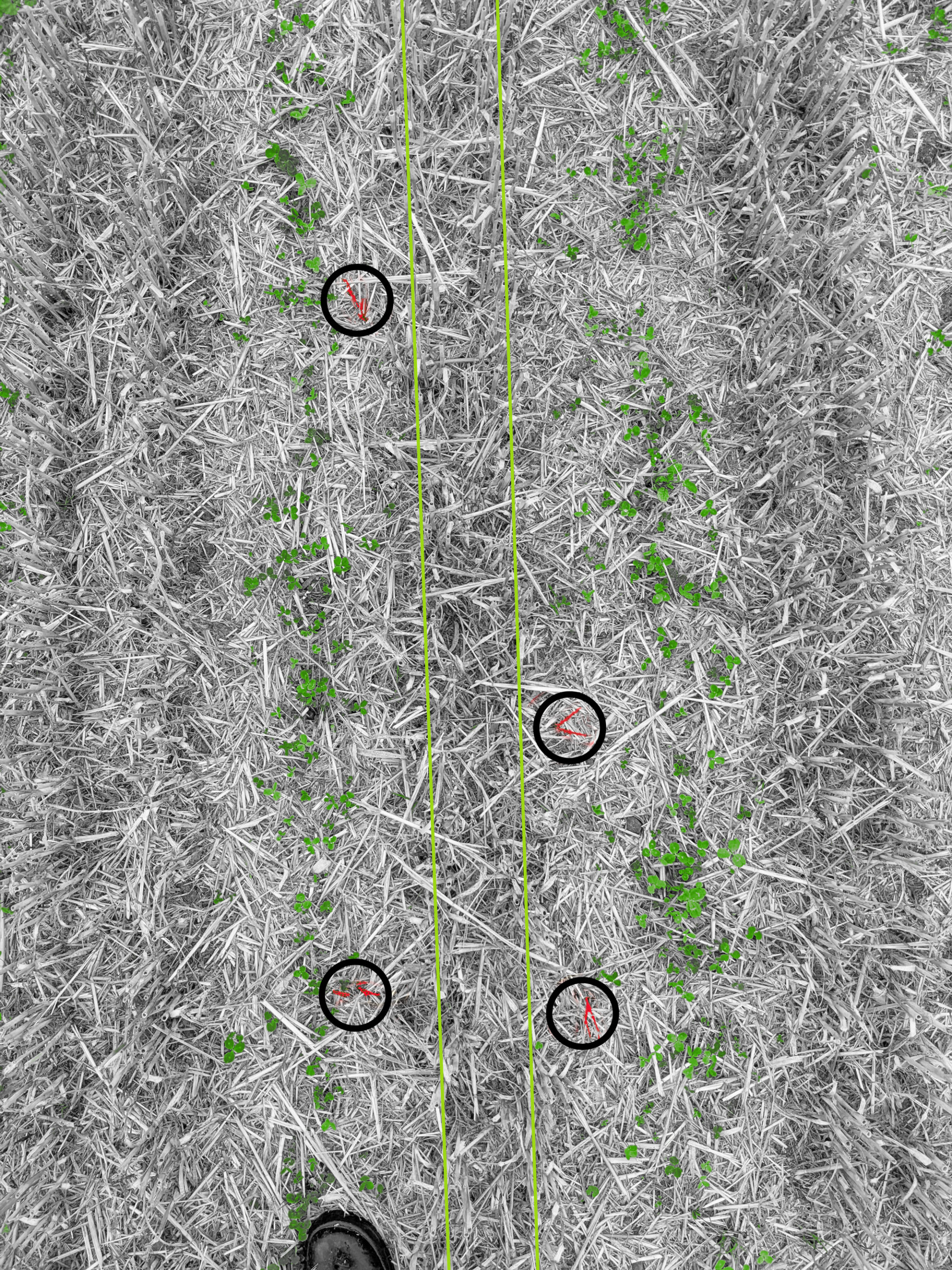
Oat stubble with 50 cm double row after hoeing and undersown red clover (C) on 28th August 2022
Green lines: Oat stubble in the double row
Red plants: Annual meadow grass
The same problems as in variant B with 25cm row spacing become apparent in the double row without use of the hoe. The meadow grass was able to establish itself and should be immediately removed for the purposes of field hygiene.
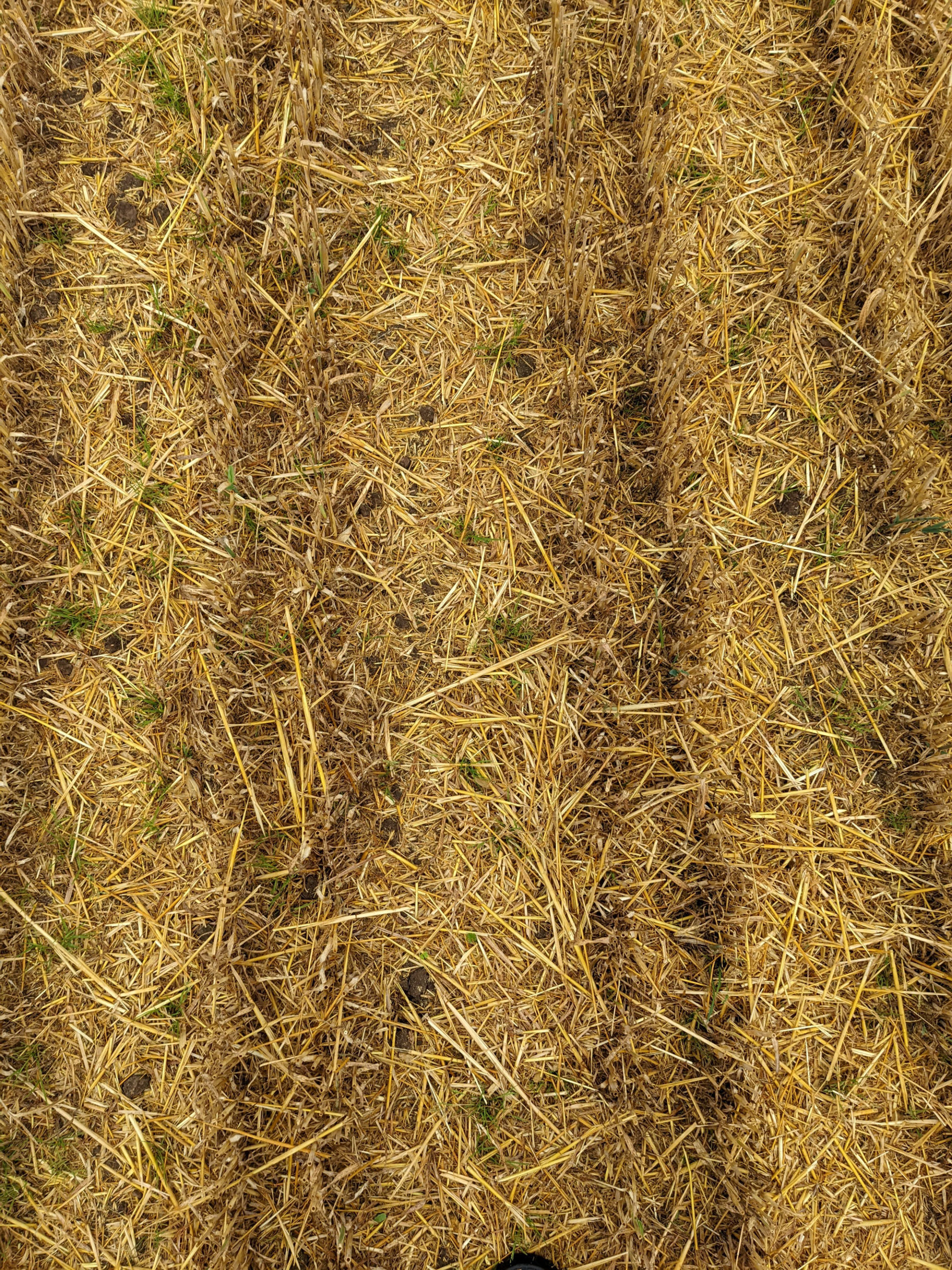
Oat stubble with 50 cm double row with full-width spraying (variant D) on 28th August 2022
The weather conditions indicate relatively well distributed precipitation. The good field capacity of the soil always provided the oats with sufficient moisture and produced good yields of 70 dt/ha.


